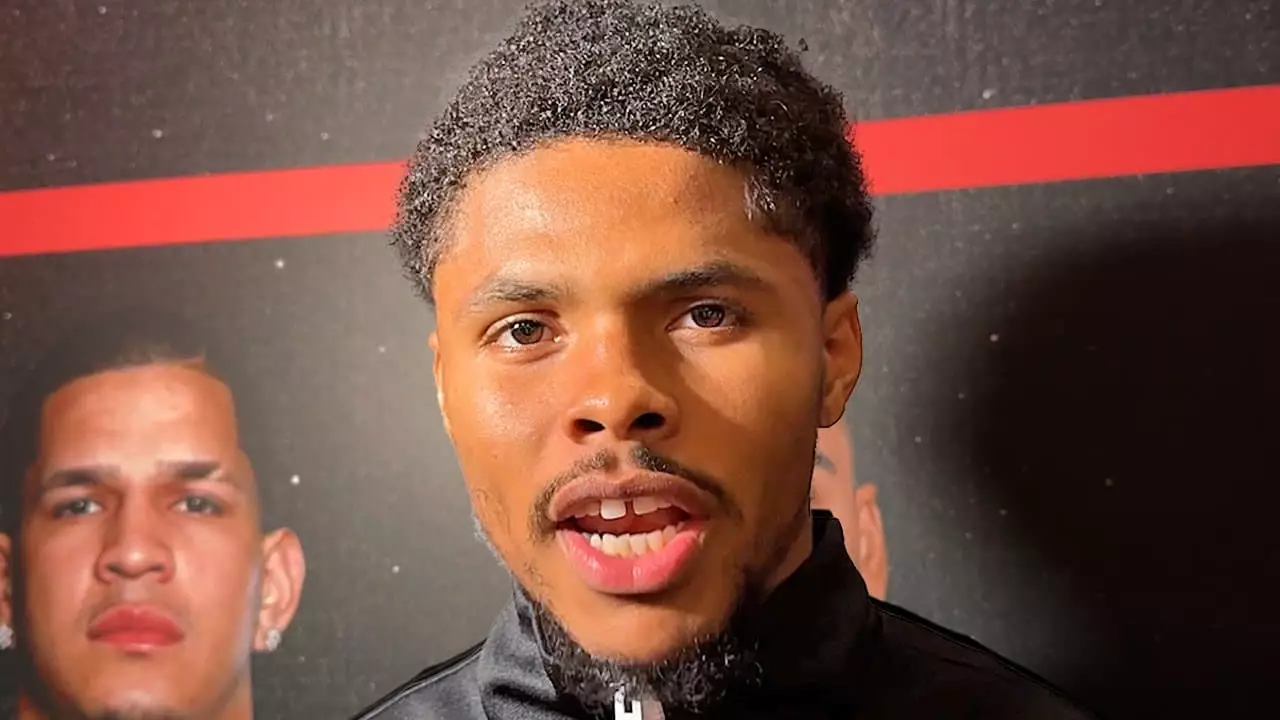Shakur Stevenson exudes a self-assured aura as he prepares to defend his WBC lightweight title against William Zepeda. His declaration that he will “shine” on fight night embodies not just confidence, but a deep-seated belief in his abilities and his style. Stevenson’s approach—his focus on movement and elusive fighting—is emblematic of a fighter who understands his strengths and is committed to executing them under pressure. This unwavering conviction is often misunderstood as arrogance, yet it’s precisely this mindset that differentiates the good from the great in boxing’s brutal arena. Stevenson’s intent to “fight his fight” signifies a refusal to be swayed by outside expectations or fight strategies that might compromise his identity. For Stevenson, victory is not merely about knocking out opponents but about asserting his style and proving its effectiveness on the biggest stage.
The Strategy Dilemma: Authenticity Versus Adaptability
Stevenson’s defensive, elusive style has drawn both admiration and criticism. Critics argue that such tactics might not be sufficient against aggressive punchers like Zepeda, who has demonstrated relentless volume and knockout power. There’s an underlying assumption that a move-heavy boxer risks becoming a target in a slugfest. However, Stevenson’s strategic choice to rely on movement—his “Jerry” style, as some call it—is less about stubbornness and more about survival. Fighters like Zepeda thrive on constant pressure, and Stevenson’s intention to evade that storm is a calculated move rooted in survival instinct. Yet, this approach leaves him vulnerable to criticism that he might not have the fighter’s grit required for a war of attrition. Still, Stevenson’s confidence reveals a belief that true mastery lies in controlling both the ring and the narrative; he aims to outthink and outmaneuver rather than outpunch his opponent.
The Weight of Expectations and the Pressure to Validate
In boxing, the lineage of greatness is often associated with devastating knockout power and relentless aggression—attributes Stevenson conspicuously lacks. Many see his career as a chess match, a strategic dance rather than a brutal brawl. Critics have questioned his toughness, citing fighters like Hector Tanajara and Mercito Gesta who fell to Zepeda’s volume. Conversely, Stevenson’s natural style and choice of opponents reflect his desire to craft a different legacy—one built on finesse, speed, and defensive mastery. The criticism around his previous matchups, and the labeling as a “hype job” by skeptics, serve to ignite his motivation rather than diminish it. He is acutely aware that his reputation hinges on tonight’s performance; thus, he trains with purpose and confidence, aiming to silence doubters once and for all.
The Reality of the Ring: Limitations and Self-Awareness
Despite his bravado, Stevenson is fundamentally aware of his limitations. His movement-based style, while elegant, is not immune to the risks posed by volume punchers like Zepeda. His earlier fights have demonstrated that when pressed against the ropes or in the pocket, he can absorb punishment. His hand speed and defensive reflexes are formidable but not invincible—attributes that will be tested in what many expect to be the toughest fight of his career. What makes Stevenson’s approach compelling is his acknowledgment of these vulnerabilities; instead of attempting to emulate heavy hitters, he chooses to fight smarter. His strategy hinges on leveraging his speed and reflexes to avoid taking damage, a tactic that’s both courageous and pragmatic. How well he executes this game plan could determine whether he cement himself as a true champion or falls prey to the chaos of war.
The Stakes and the Future: Beyond the Fight
This upcoming bout isn’t just about defending a belt; it’s a declaration of identity within boxing’s ever-evolving landscape. For Stevenson, the fight represents a crossroads—either validate his constructed image as a defensive maestro or reveal the cracks that skeptics believe exist. His willingness to take on a volume puncher like Zepeda demonstrates a desire to test his resilience against a real threat, rather than opting for safer, more manageable fights. Whether Stevenson will evolve his style or double down on his movement game remains to be seen, but one thing is certain: his career trajectory hinges on this moment. The victory or defeat will shape how he’s remembered—either as a resilient strategist who embraced his identity or as a fighter out of his depth against relentless opposition. The journey isn’t over, but this fight is unquestionably a defining chapter.

